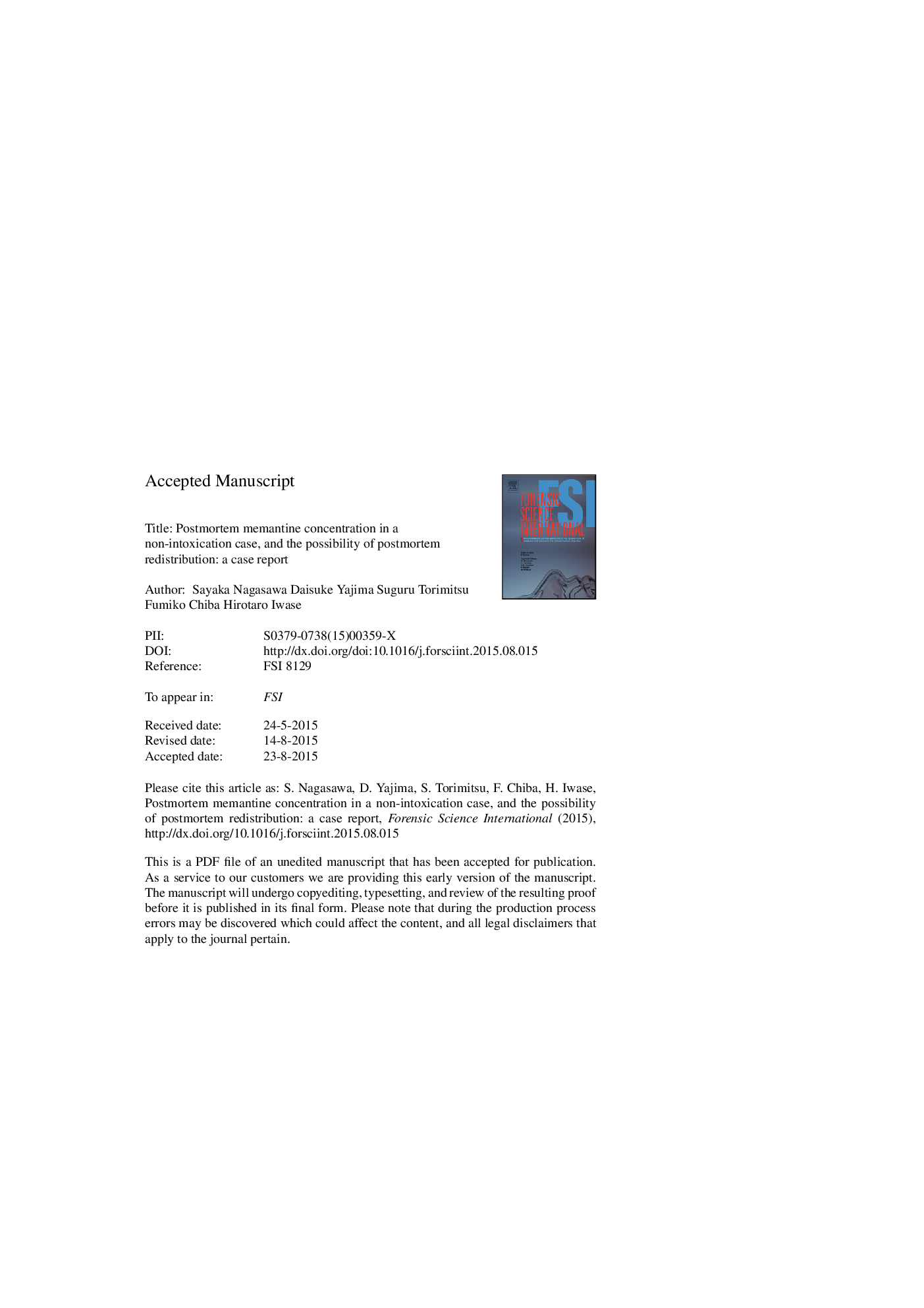| Article ID | Journal | Published Year | Pages | File Type |
|---|---|---|---|---|
| 6552088 | Forensic Science International | 2015 | 24 Pages |
Abstract
Memantine concentrations detected were 1.31 μg/mL in the peripheral blood, 3.95 μg/mL in central blood, 2.09 μg/mL in the urine, 25.54 μg/g in the liver, 1.16 μg/g in the thigh muscle and 2.13 μg/g in the subcutaneous fat. In all samples, the concentrations were higher than the accepted therapeutic range (which is approximately 0.09-0.15 μg/mL). The central blood to peripheral blood (C/P) memantine ratio was 3.01 while the liver to peripheral blood (L/P) ratio was 19.5. It is documented that a C/P ratio exceeding 2 and L/P ratio exceeding 20 highlight a propensity for significant PMR. Although this is a single case study, our data suggest that memantine exhibits PMR. Additionally, a lowered pH was found in peripheral blood (pH 6.2) and central blood (pH 6.1). This postmortem reduction in blood pH may also promote the PMR of memantine. Because there is very little available postmortem toxicological data on memantine, our case study will serve as a foundation to assist in future forensic investigations.
Related Topics
Physical Sciences and Engineering
Chemistry
Analytical Chemistry
Authors
Sayaka Nagasawa, Daisuke Yajima, Suguru Torimitsu, Fumiko Chiba, Hirotaro Iwase,
